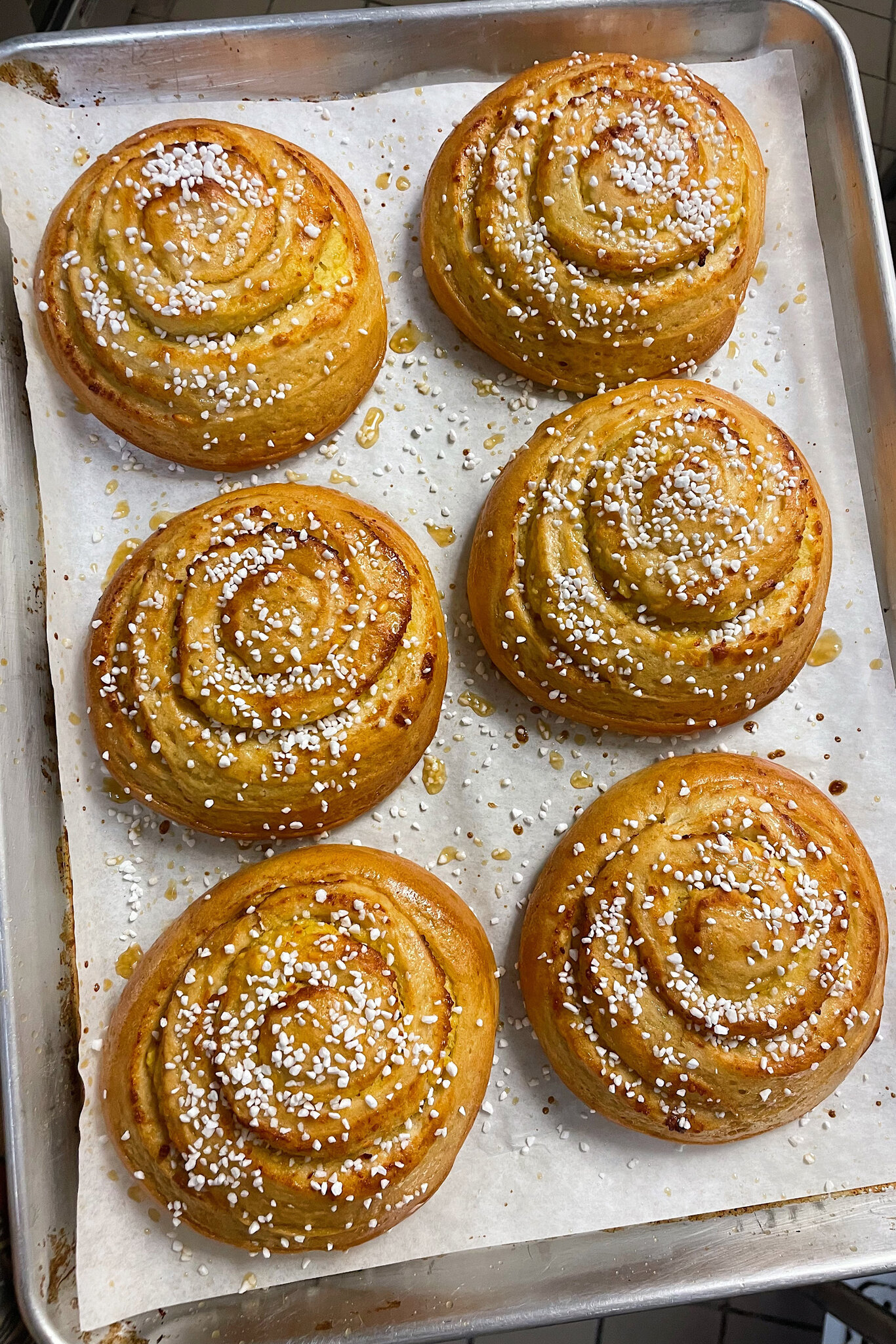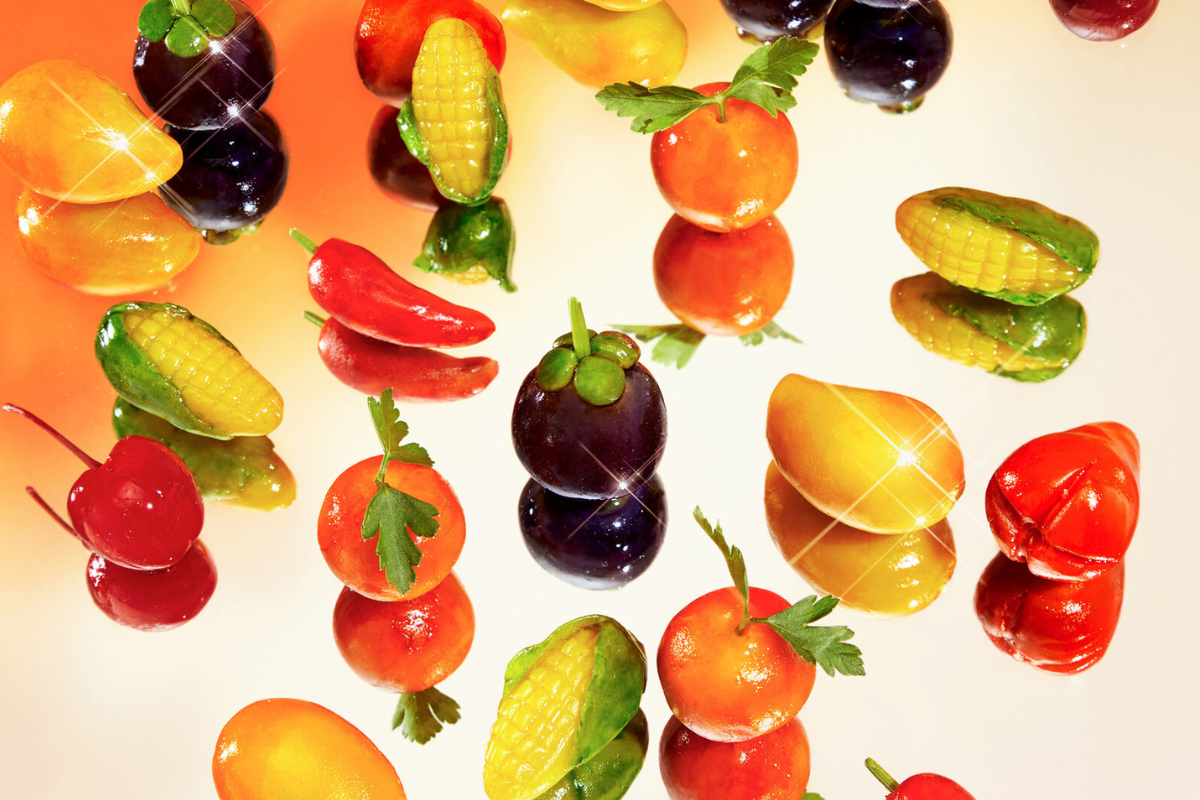At the Malaysian pastry shop Kuih Cafe in downtown Manhattan, the baker Veronica Gan, who’s in her mid-50s, sells ang ku kueh, a piece of pliant, toothsome ruby red mochi molded in the shape of a tortoiseshell. Mochi itself has little flavour — its pleasures are textural — but bite into the confection and you find that it’s stuffed with sweet mung bean paste. Starchy, subtly nutty and slightly sweet, it lingers on the tongue.
The mung bean (Vigna radiata) was likely first domesticated in India around 4,000 years ago, before spreading from South Asia to Southeast Asia, then north to China. Each bean is about one-fifth of an inch long and grows from the plant in thin, hairy pods that develop from yellow (or sometimes purplish) flowers resembling orchids. In Asia, the mung bean — whether boiled, sprouted or milled into flour — is as fundamental and versatile as rice. It’s used in dishes both savoury and sweet, although it’s particularly beloved in traditional desserts such as Indian moong dal halwa, a buttery porridge often spiced with saffron and cardamom, and Korean injeolmi, glutinous rice cakes rolled in crushed nuts.


Although it’s common across the continent, the mung bean has been slow to catch on in the West — particularly in its sweetened form. Part of this is a difference in taste: Asian confections tend to be less sweet and favuor dense, chewy ingredients — adzuki beans, chickpeas, lotus root — that Westerners generally associate with savoury food. Now, though, a new generation of Asian American chefs are creating novel interpretations of traditional mung bean desserts that they ate as children. Thu Pham Buser, 32, a New York City-based food stylist and chef who grew up in Ho Chi Minh City (whose old name, Saigon, remains in popular use), remembers bánh đậu xanh trái cây — thimble-size candies shaped like oranges, mangosteens or cherries, molded from mung bean paste and painted with food colouring — as a fixture of her youth. While riding on the back of her father’s motorbike, she says, “sellers would position themselves at the red lights and try to make eye contact, because they knew that kids just can’t resist.” Buser began making them and posting photos on her Instagram as part of her mission to promote Vietnamese delicacies to a wider Western audience. She plans to serve them at her pop-up Vietnamese dinner series, Ăn Cỗ, this spring.
In Long Beach, Calif., the vegan Filipino pop-up San & Wolves Bakeshop, founded by Kym Estrada, 32, offers pan de monggo, a soft milk bread stuffed with yellow mung bean filling that substitutes cow butter for a homemade coconut oil-based one. Last fall, Rachel Lo, 33, a chef who shares Chinese American recipes on TikTok, posted a recipe for snow skin mooncakes: She updated the Chinese classic, which is usually served in autumn for the Moon Festival and made of white glutinous rice wrapper filled with mung bean paste, for a version with a marbled pastel exterior and pandan-flavoured mung bean filling.
Lauren Tran, 34, a baker who runs the Vietnamese American pop-up Bánh by Lauren in New York, is developing her take on chè bưởi, a clear pomelo rind soup thickened with tapioca starch and topped with a coconut sauce, in which steamed beans are suspended like stars. She also makes a five-tier version of bánh da lợn, a sticky rice cake created by steaming glutinous layers of bright green pandan and yellow mung bean batters. She remembers the cake from her childhood in Seattle, where it was sold in strips on Styrofoam plates at Vietnamese groceries. Eating it was a pleasurable, sticky mess. Tran, however, wraps bite-size portions of the cake in cellophane so that they resemble bonbons. “It’s very nostalgic to me,” Tran says, but “you don’t have to be Vietnamese, or fluent in Vietnamese, to relate to it.”
